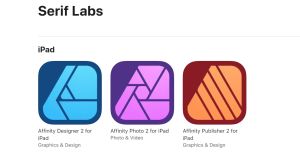 AI writing code: current status (April 2025)
AI writing code: current status (April 2025)
As we have written in many posts on this blog, artificial intelligence (or large language models, to be more specific) started its conquest from some relatively narrow domains, being used by creative professionals for image generation and assistance in copywriting, and programmers to help with routine code writing. Today, the applications of this technology have grown more varied, as reflected in our “AI for the masses” series of posts. Still, coding not just remained one of the key jobs done by AI, but evolved to the level of being adopted by major players. This piece reviews the current state of affairs in this field.
AI coders in Microsoft
In a recent interview with Mark Zuckerberg, Satya Nadella, Microsoft CEO, stated that as much as 30% of the company’s codebase is now written by AI. Moreover, he said that this figure is growing fast. As for the quality of code output by artificial intelligence, it varies depending on the language, with Python being obviously easier for non-human coders to master than C++.
On the same note, Microsoft CTO Kevin Scott previously envisioned that by 2030, up to 95% of the code generated for the company’s products will originate from AI.
AI programming in Google
In late 2024, Google CEO Sundar Pichai admitted that over a quarter of all the new lines of code the company deploys were written by AI. Humans participate in the process as reviewers and approvers, but the shift is still considered to be a fundamental one for the giant’s development process.
Pichai has also emphasized that the company makes AI a core component of Google’s growth strategy, regarding it as something greater than a simple productivity booster. To usher in adoption of the technology, they structurally altered teams with the aim to unify AI-related efforts.
Code by AI in Meta
Mark Zuckerberg, Meta CEO, hasn’t given a percentage of AI-written code for his corporation, but indicated that AI’s role in code generation is growing rapidly. His estimation is that within the next year, about half of all the development efforts for Llama and other projects related to artificial intelligence will be carried out by large language models.
Meta can be said to be one of the early adopters of AI technology; currently, the company fosters its cadre of AI and machine learning engineers and seeks to further automate and accelerate the internal development cycles.
Duolingo: going AI-first
Duolingo may be smaller than the companies above, but its co-founder and CEO, Luis von Ahn, is known to have a keen sense of what’s to come. For example, back in 2012, Duolingo decided to go all-in on mobile when others simply adapted their assets for smaller screens. This move gave the business a very significant boost.
In a recent letter to the employees, Luis announced that Duolingo goes AI-first. This concerns content generation in the first place – teaching foreign languages requires tons of content – but will likely be expanded to other aspects of the business, too.
All things considered, it looks like AI moves up from the position of a sidekick to that of a driver behind the wheel. We shall not ruminate on the implications of this shift, but it is perfectly clear that things are changing, and the process is accelerating.



